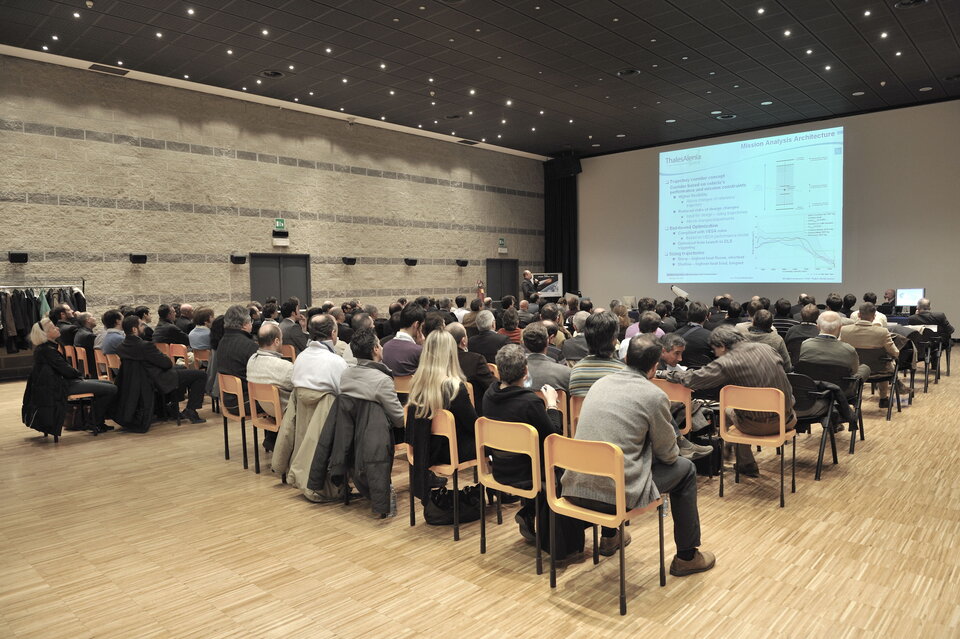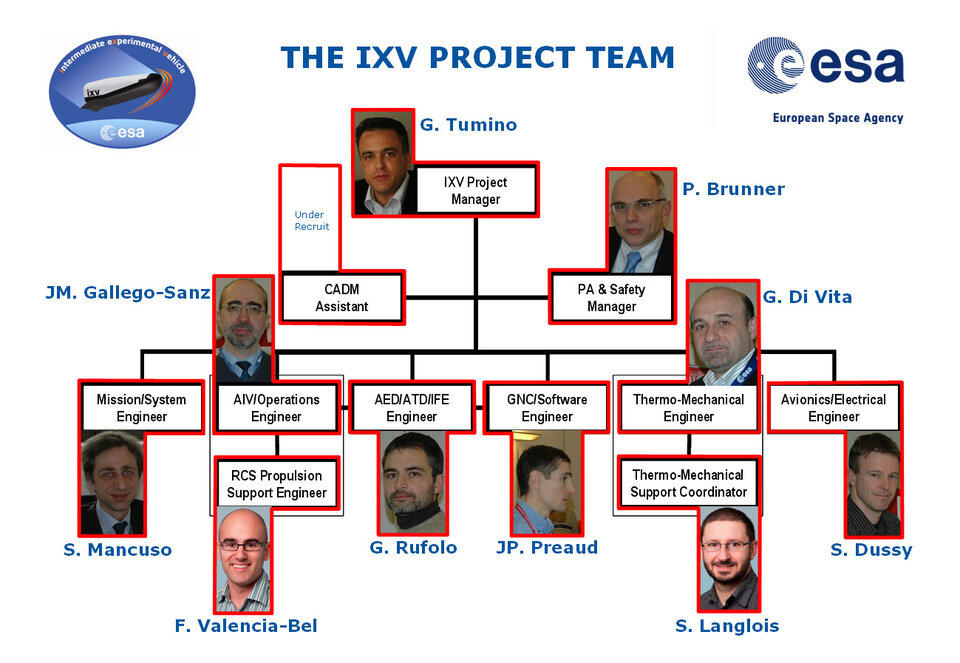IXV prepares the European Low Earth Orbit return ambition
On 4 February in Turin, Italy, Thales Alenia Space Italy and its main industrial partners presented to ESA the new Intermediate eXperimental Vehicle (IXV) design baseline, a key milestone in the start of the full development phase of the IXV, due to make its first flight three years from now.
Following the changes in prime contractor from the preliminary design phase-B, the new industrial organisation for the project development phase-C/D focused their first efforts on the consolidation of the technical and programmatic aspects of the IXV design.
While setting up the industrial organisation for the development of the vehicle up to flight, significant technical achievements were made in the optimisation of the design of the IXV baseline, including Guidance Navigation and Control (GNC), avionics (i.e. power, data handling, radio frequency and telemetry), measurement sensors, reaction control, hot and cold composite structures, and thermal protection and control, with improvements on mass, power and telemetry requirements.

“Less than one year ago the Agency started discussions with industry, and today I see that the activities have progressed significantly,” says Antonio Fabrizi, Director of Launchers. He added, “Today’s milestone is important for the Agency as we will be able to certify that all elements of the IXV have been consolidated and we are ready to start the development phase with limited risks.”

The IXV is the first demonstrator of the Future Launchers Preparatory Programme (FLPP) to enter the full development phase-C/D. Upon successful completion of the present milestone, named Consolidation Key Point (CKP), the three years of development activities will mainly concentrate on the critical design in 2010, the subsystems qualification in 2011 and the vehicle integration for flight in 2012/13.

“The challenging schedule of the IXV development is considered an asset for the project itself, allowing Europe and European industry to be ready for a leading role in the preparation of future operational systems for reentry missions from low Earth orbit (LEO),” says Giorgio Tumino, IXV Project Manager. “Although the IXV is conceived to provide a platform for the in-flight verification of critical reentry technologies, there is increasing interest in the robotic applications spinning-off from the IXV, which will be flight proven in three years thanks to the IXV mission experience.”

In fact, in a worldwide scenario increasingly striving for the commercial exploitation of space, the IXV mission experience will provide a unique opportunity to verify, in flight, competitive assets that will be useful for the preparation of future robotic space transportation developments, such as limited sizes, operational flexibility and potential reusability, at limited risk and cost.
The IXV development is being carried out with an industrial repartition of activities across Europe, integrating the best competences available within the ESA Member States participating to the IXV project.
The milestone event was attended by approximately 150 participants from industry, allowing representatives of ESA to meet with the main industrial partners.
From the ESA side, the implementation of the industrial activities will be followed by a dedicated IXV project team, integrating competences from Hermes, X-38, ATV, Vega and ESA reentry technology expertise and, therefore, building upon the European experience matured in the last decades of space transportation programmes.
After a long lasting period of feasibility studies across Europe, both ESA and industry are motivated to enter into a full development programme, proud to represent Europe in such an exciting challenge, and committed to the technological success of the IXV mission into space.


